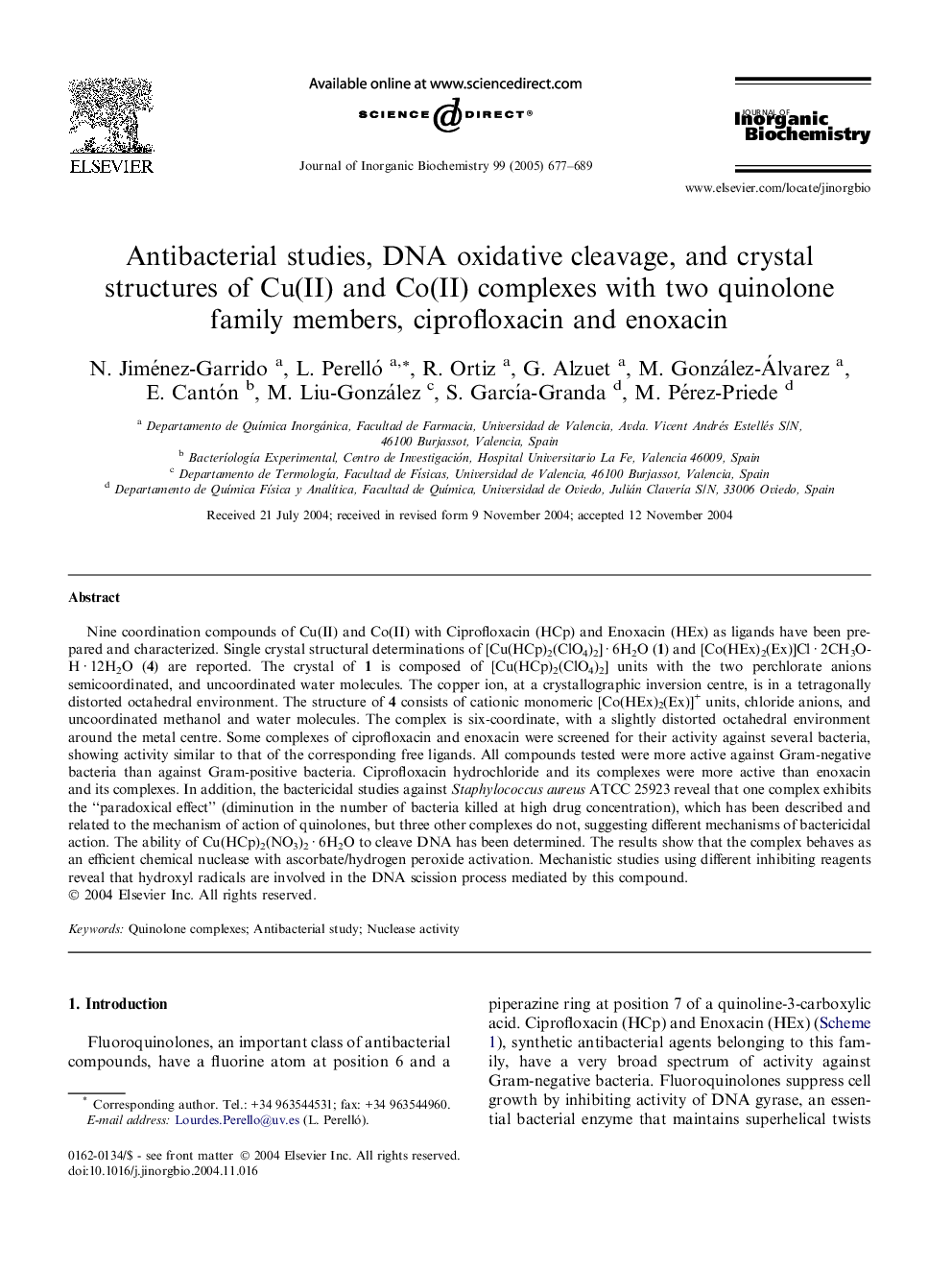| Article ID | Journal | Published Year | Pages | File Type |
|---|---|---|---|---|
| 10573978 | Journal of Inorganic Biochemistry | 2005 | 13 Pages |
Abstract
Nine coordination compounds of Cu(II) and Co(II) with Ciprofloxacin (HCp) and Enoxacin (HEx) as ligands have been prepared and characterized. Single crystal structural determinations of [Cu(HCp)2(ClO4)2] · 6H2O (1) and [Co(HEx)2(Ex)]Cl · 2CH3OH · 12H2O (4) are reported. The crystal of 1 is composed of [Cu(HCp)2(ClO4)2] units with the two perchlorate anions semicoordinated, and uncoordinated water molecules. The copper ion, at a crystallographic inversion centre, is in a tetragonally distorted octahedral environment. The structure of 4 consists of cationic monomeric [Co(HEx)2(Ex)]+ units, chloride anions, and uncoordinated methanol and water molecules. The complex is six-coordinate, with a slightly distorted octahedral environment around the metal centre. Some complexes of ciprofloxacin and enoxacin were screened for their activity against several bacteria, showing activity similar to that of the corresponding free ligands. All compounds tested were more active against Gram-negative bacteria than against Gram-positive bacteria. Ciprofloxacin hydrochloride and its complexes were more active than enoxacin and its complexes. In addition, the bactericidal studies against Staphylococcus aureus ATCC 25923 reveal that one complex exhibits the “paradoxical effect” (diminution in the number of bacteria killed at high drug concentration), which has been described and related to the mechanism of action of quinolones, but three other complexes do not, suggesting different mechanisms of bactericidal action. The ability of Cu(HCp)2(NO3)2 · 6H2O to cleave DNA has been determined. The results show that the complex behaves as an efficient chemical nuclease with ascorbate/hydrogen peroxide activation. Mechanistic studies using different inhibiting reagents reveal that hydroxyl radicals are involved in the DNA scission process mediated by this compound.
Keywords
Related Topics
Physical Sciences and Engineering
Chemistry
Inorganic Chemistry
Authors
N. Jiménez-Garrido, L. Perelló, R. Ortiz, G. Alzuet, M. González-Álvarez, E. Cantón, M. Liu-González, S. GarcÃa-Granda, M. Pérez-Priede,
